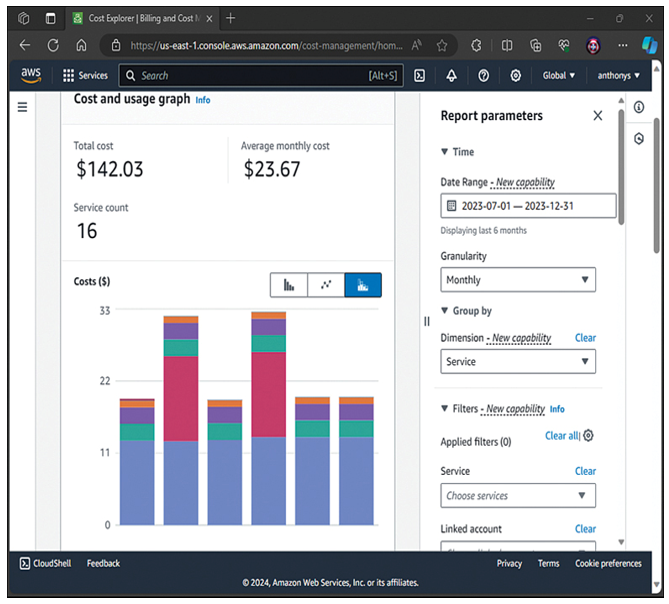Cloud Economics
One of the biggest factors driving the move to public cloud technologies like AWS is economics. Organizations become aware of several major factors that make a cloud move almost inevitable. In this part of the chapter, we break them down to ensure that you fully understand them, even if finance is not your primary focus.
Fixed Costs Versus Variable Costs
When you are operating IT solutions in a typical on-premises environment, you face many costs that are fixed (instead of variable). We commonly refer to these fixed costs as capital expenses (CapEx). Operating with these fixed costs tends to come with more disadvantages than operating in the cloud with a model that tends to offer variable costs made up of operating expenses (OpEx). Here are just some disadvantages to consider with the on-premises CapEx model:
Large CapEx costs: Fixed costs in on-premises environments tend to involve significant up-front capital investments for hardware, software, and infrastructure. These large up-front costs tend to put strain on organizations, especially smaller businesses and startup organizations. Dealing with CapEx costs typically involves guessing at required capacity, which adds even more stress to the process.
Limited flexibility: On-premises fixed costs tend to offer limited flexibility in adapting to changing business requirements. Adjusting the capacity or upgrading hardware often involves additional investments and may take time, leading to delays in responding to dynamic market conditions.
Technological obsolescence: In today’s IT environment, technology is advancing faster than ever before. This can be another huge disadvantage to the CapEx model seen typically in on-premises environments. Your company risks making large, up-front investments in technology that might be at risk if the purchased technology becomes out of date with new approaches.
When you migrate to the public AWS Cloud, you switch to a cost model that is primarily based on variable costs. This presents many potential advantages, especially compared to dealing with the large, fixed-cost investments often required on premises. Here are the main advantages to keep in mind:
Increased flexibility: The variable costs that are associated with pay-as-you-go pricing offer flexibility in adapting to changing workloads. Organizations pay only for the resources they consume, making the cloud suitable for organizations whose resource needs frequently change.
Little to no up-front commitment: Unlike with the CapEx model frequently experienced on premises, variable pay-as-you-go costs in the AWS Cloud eliminate the financial stresses of large, up-front capital expenditures. Figure 5-1 shows a sample pay-as-you-go cost report from AWS.

Figure 5-1 An AWS Cost Report
Increased elasticity: Thanks to variable costs, organizations enjoy the ability to pay less as demand decreases and pay more only as resource demand increases. The cost model of AWS is often compared to a utility bill.
Increased cost transparency: Another advantage to the variable cost model of AWS stems from the fact that organizations can see the direct correlation between their resource usage and the costs of these resources. This advantage permits companies to more easily optimize resource utilization and often helps companies identify opportunities for cost savings.
